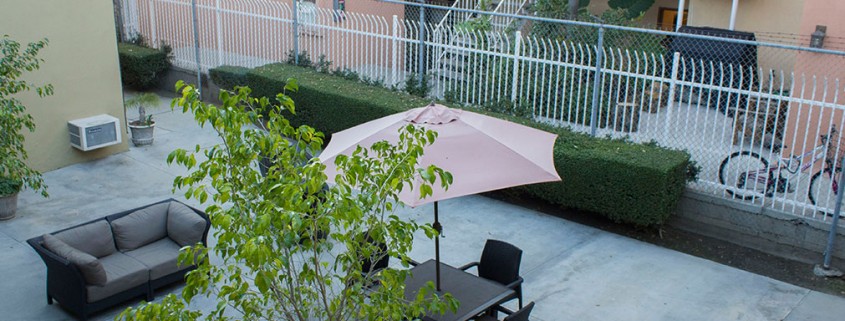Cardinal ‘n’ gold to promote sustainability
Starting next fall, students living in Cardinal ‘n’ Gold will be part of the movement to encourage sustainable living at USC.
Fourteen apartments in the building will soon become part of USC’s newest special interest community for people who actively want to participate in the reducing their carbon footprints. The “Sustainable Living” community will be encouraged to take part in recycling and composting, as well as energy and water conservation.
Though not mandatory, Erin Fabris, sustainability coordinator for USC Housing, believes students will participate willingly.
“Hopefully, the people who live there will want to participate, so we’re not really going to enact any enforcement measures. We’re just trying to make it as easy as possible for residents to recycle and compost everything they need to,” Fabris said.
In addition to resources to help students become more energy-efficient, the building is scheduled for extensive refurbishment this summer.
Each apartment will be outfitted with green technology including energy-efficient toilets, showers and LEDs. Existing furniture will be replaced by a third-party company that will use materials from the old furniture to create completely new pieces.
Fabris believes that the combination of students’ mindful behavior and updated technology could result in significantly lower utility bills.
“I would imagine that these are students who are already thinking about this and are environmentally minded, so a combination of technology and behavior will hopefully reduce the bill for these students,” she said.
Currently, various forms of green technology can be found in USC Housing, but come fall, Cardinal ‘n’ Gold aims to incorporate all of them in one place.
The program was initiated when USC Housing Director Keenan Cheung had the idea to start a zero-waste community at USC, where 90 percent of waste would be diverted from landfills for composting or recycling.
Months later it was reported that of all the other special interest communities, Sustainable Living had the second highest number of applicants.
“I think that the USC student body is starting to realize the importance and urgency of embracing the environment as something we need to care about,” said Ahlia Bethea, director of the Environmental Student Assembly. “With this being the second most chosen [special interest community], students are sending a message to administrators that sustainability is an issue that they care about and better practices are something they want to see at USC.”
This initiative is consistent with the USC Sustainability 2020 plan that was announced in Nov. 2015. Created by the faculty, staff and students comprising the USC Sustainability Steering Committee, the plan provides the framework for the university to incorporate sustainability. According to the website, the committee hopes to reduce greenhouse emissions by 20 percent and divert 75 percent of all waste from landfills.
Though USC has made significant strides by replacing the majority of toilets, faucets and shower heads with low-flow models, Bethea believes there is still more that needs to be done.
“Many of our peers in higher education have done far more on their campuses in regards to sustainability,” Bethea said. “We have a long way to go, however, with the efforts of groups like ESA, the Sustainability Office and the assistance of faculty and administrators working collaboratively. More significant impacts are definitely on the horizon.”

